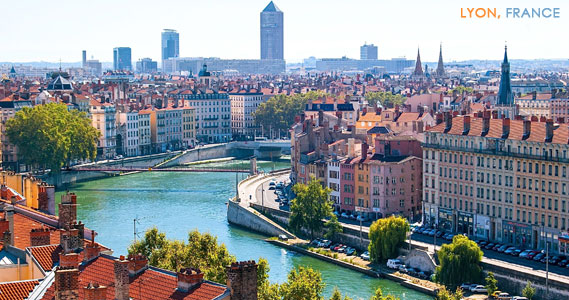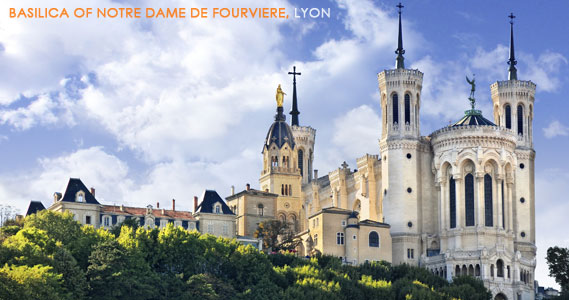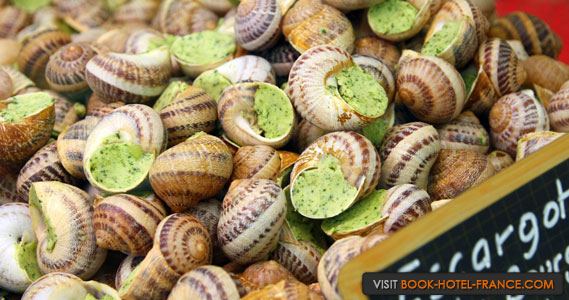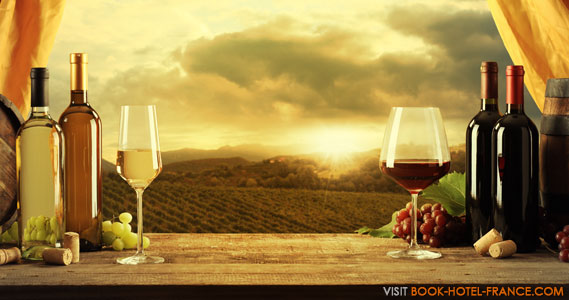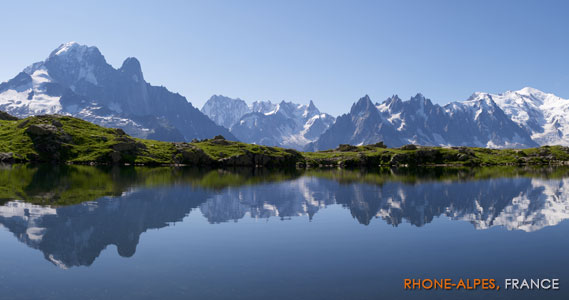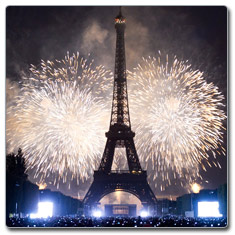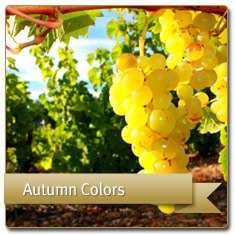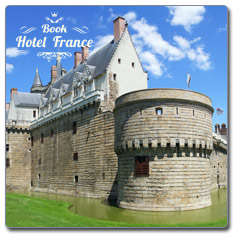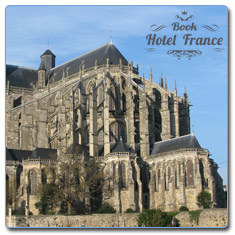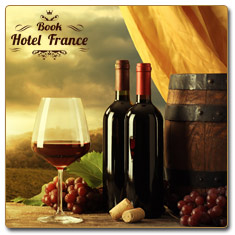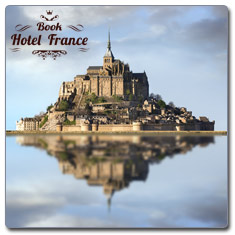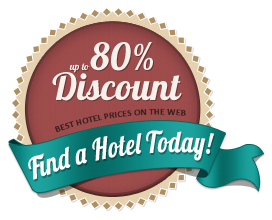Lyon, Rhone-Alpes City Guide
Lyon has been founded by Romans in 43BC, by the name Lugdunum. It has been noted that first settlers were war veterans from Caesar’s war campaign.
Thanks to its good geographical location, city soon became Capital of Gaul. It was administrative, economic and financial center in that region.
In the Middle Ages city spread on both sides of river Saone and soon afterwards, in 13th century got the name Lyon. Big problem for Lyon at this time was constant changes in political map of France, so the city was placed from one command under another.
In the Renaissance city started to flourish again. Many trade fairs and good fiscal terms attracted merchants from all over Europe and Lyon became one of the largest cities in Europe and first by finance at one point.
Main industry was silk weaving. That was the time when King François I considered to make Lyon the capital of France.
Religious wars in France did have effect on Lyon but that didn’t change its high rank as industrial and intellectual center.
During French revolution Lyon as a city took side against the central power (Parlament) which caused repression and more than 2000 executions.
19th century was a little bit rough for Lyon, since several riots spread through city. Those riots were initialized by silk weavers, who were protesting against new technology that caused unemployment. Unfortunately, silk weaving shot down as the disease attacked silk worms, and after opening of Suez Canal it was cheaper to import silk from Asia.
But another industry came out right there in Lyon. In 1895 Lumiere brothers introduced cinema to the world.
During World War II, city of Lyon was between “free zone” and zone of occupation, which made it important place for the Germans and for French.
In the 60’s Lyon started the project to return old Lyon back to live, as well as to make it more modern and current to new trends.
Interesting about Lyon is that it’s one of very rare cities in the world, that didn’t have any major environmental disaster and wasn’t heavily destroyed and then rebuilt. That is what gives Lyon its charm.
Architecture hasn’t changed much and represents vibrant history of Lyon.
Old town of Lyon is second largest Renaissance area in Europe, after Venice. This whole neighborhood is built in Middle Ages, from 15th to 17th century. Architecture remains the same.
Most of the buildings were built by rich merchants who lived there during fairs. It is said that at the time Lyon had the highest buildings in Europe. Whole area is labyrinth of colorful buildings and narrow streets.
Old Lyon is divided into three parts, each named after a church and have its own history:
St Paul was commercial area;
St Jean was residential area and
St George was craftsman area.
To see this Old Lyon for real, go there in the morning, where there are not many tourists and not all shops and restaurants are open. Be sure to have a coffee in the afternoon here as well, to enjoy life that goes through these streets.
St Jean Cathedral on the St Jean square is a beautiful Gothic building with several Romanesque elements. It has spectacular astronomical clock. Next to the cathedral is archeological garden.
SOUNDTRACK: Deus Ex - Icarus
Traboules are typical feature of Lyon’s architecture. They are passages that connect two streets through building or through courtyard. Most of them have really beautiful décor and represent masterpieces of Florence style in France. Some of them are very easy to find, with signs for tourists, but some are hidden. So if you have urge to discover wonders of Lyon, buy detailed map and go research.
Fourvière is the hill in the center of Lyon, next to the river. It is also called “the hill that prays” due to hill today represents religious area of Lyon. Several churches, basilica and Archbishop’s office are all located on
Fourvière. Fourvière was place where Romans built their first settlement - Lugdunum.
Basilica is a building that dominates this whole area. It was built in 19th century and represents mix of architecture styles. But it is more interesting from the inside. It’s very vibrant, colorful, with lots of ornaments and sculptures. Some would say it just “over the top”.
In front of Basilica there is a huge place, with great viewpoint at the city.
If it’s very clear day, you can even see Mont Blanc in the distance.
Next to basilica is Metal Tower, smaller version of Eiffel Tower, built on initiative of anticlerical people, who wanted to have non-religious building at the top of the Lyon. Tower is the highest point of Lyon, but it’s unfortunately closed.
When you’re in Lyon definitely pay a visit to St Irénée church. It is the oldest church in Lyon, built on former Roman necropolis. There are still remains of crypts that can be seen on the site.
This is just a small part of what Lyon has to offer. There are many museums, parks, churches, building and squares.
Great thing about Lyon is that except museums most of the attractions are free of charge.
So all you have to do is take a map, find your direction and start exploring.
Traditional restaurant in Lyon is called bouchon. Bouchons were founded in 19th century by cooks, who were fired from wealthy family services. They opened these restaurants for working class. When you come to Lyon you must eat at one of the bouchons and try some of the specialty, like Lyon salad, boiled sausage in red wine, dumplings with pike fish, oven cooked sliced potatoes with cream, etc. Have in mind that in these restaurants potions are very large.
Most of the restaurants are located in Rue St Jean, in the center, but locals prefer to go to Presqu'île, which is peninsula across the river, where many restaurants, bars and shops are. French restaurants are usually small so book a table earlier.
Best bars are in streets that go up the hill. Streets and passages are narrow, but that’s the charm of it. They are full of people, especially during warm nights, when people spend time outside, casually sitting or standing on steps with glass of drink in their hand. There are many English or Irish pub in city and they are very popular with students.
Along river Rhone, at night several riverboats serve as bars or restaurants
For wine lovers Lyon is great starting point to explore wine regions of France. In two hours driving range famous vineyards are to be found: Beaujolais, Burgundy, Rhône Valley, Jura, Savoie and Bugey. You can visit them on your own or have a guided tour.
Each vineyard has nice restaurant where you can try wine with some of great French meals. Also prices to buy wine are much lower than in the city. Throughout whole trip you’ll be passing stunning landscapes.
Perouges is a small village just 30km away from Lyon. It has look as if the time has stopped here. Every building dates from medieval time. Whole place has charming atmosphere and takes you “back in time”. Perouges is very popular with tourist, but also among French people, who come here for the weekend.
Annecy is another medieval town, two hours from Lyon. It is called Venice of Savoie, because it lies on the river Thiou and has many narrow stone-paved streets, canals and small bridges over them. It’s very colorful town, with restaurants, bars and shops. Many restaurants has terraces over canals which offers extra joy in having a lunch over water. Water of river Thiou is clean, fresh and a wonderful azure color. There is also a lake, where you can swim or rent kayak and paddle on the lake or through the town, on canals.
If you’re coming in winter Lyon is two hours away from ski centers. If you don’t want to go for a longer period there are daily “packages”, that departure every morning and return in the evening. It gives you chance to spend day outside, skiing and then return again to beautiful Lyon.
The most impressive event of the year in Lyon is The Festival of Lights. It started of as a religious event, in 1852, when people of Lyon illuminated city with candle lights in honor of placing golden statue of Virgin Mary. Ever since then event is celebrated, but it became more international, with light shows by professional artists, not just from France, but from all over the world. It attracts more than 4 million visitors each year.
It lasts four days in December, around 8th.
During summer, from June to August, Roman theatres on Fourvière hill host concerts of different genre of music. It is followed by dance, theatre and cinema. It is called The Nuits de Fourvière festival.
Very colorful event called Biennals takes place in Lyon from September to January. Street parade opens event each year and is followed by other dancing events. It’s a great way to warm up in cold autumn and winter days!
If you’re coming to Lyon by plane, city has its airport - Saint-Exupéry Airport. Airport has international flights to London, Madrid, Frankfurt, and others, as well as low budget flights, from London, Berlin, Brussels, Rome, Edinburgh and Madrid. Airport is just 25km away from the city and you can get there by train or bus, or rent a car at the site.
Lyon is connected with TGV (high speed train) with Paris and Marseille ( hour and half ride). Other trains connect Lyon with most of the France, and other destinations, like Brussels or London. Lyon has three main train stations, serving national and regional destinations.
Lyon is a major motorway intersection for central and southern France. There is direct highway A6 to Paris. Highway A7 connects Lyon with Marseille, Nice, Spain, and Italy. On the east city is just few hours away from Grenoble, the Alps, and Northern Italy. There are also highway connections with Geneva (Switzerland) and Germany.


